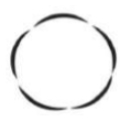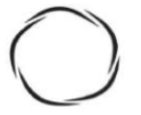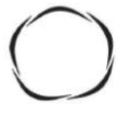The type of aestivation seen in Calotropis is represented by:
1.

2.

3.

4.





The floral diagram shown in the given diagram can be of:
1. A plant that produces a chemical that can disrupt mitotic spindle
2. Deadly night shade
3. Indigofera plant, a source of dye
4. A pulse plant
The region responsible for growth in the length of the root is:
1. A
2. B
3. C
4. D
Match each item in Column I with one item in Column II and chose your answer from the codes given below.
|
Column I (Flower) |
Column II (Position of ovary) |
|
I. Sunflower II. Mustard III Plum |
1. Epigynous 2. Hypogynous 3. Perigynous |
Codes:
I II III
1. 1 2 3
2. 2 3 1
3. 2 1 3
4. 3 2 1
is the floral formula of
1. Allium
2. Sesbania
3. Petunia
4. Brassica
Keel is the characteristic feature of flower of
(1) tulip
(2) Indigofera
(3) Aloe
(4) tomato
The wheat grain has an embryo with one large, shield-shaped cotyledon known as
(1) epiblast
(2) coleorrhiza
(3) scutellum
(4) coleoptile
In ginger vegetative propagation occurs through
(1) rhizome
(2) offsets
(3) bulbils
(4) runners
Plants, which produce characteristic pneumatophores and show vivipary belong to
(1) mesophytes
(2) halophytes
(3) psammophytes
(4) hydrophytes
Root hairs develop from the region of
(1) maturation
(2) elongation
(3) root cap
(4) meristematic activity








